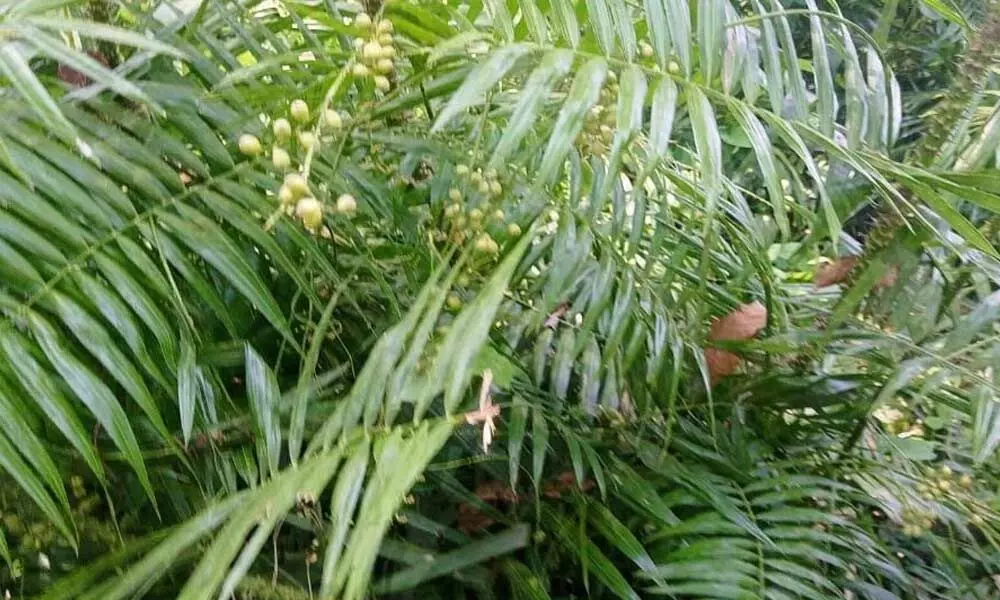Disappearing cane forest, a bane

Canebrakes near Palampet forest department's signboard
Once hemmed in a thick forest and considered as a hotspot of biodiversity, Ramappa Temple is now just an architectural marvel surrounded by lush green paddy fields with the greenery disappearing over the decades.
Ramappa (Mulugu): Once hemmed in a thick forest and considered as a hotspot of biodiversity, Ramappa Temple is now just an architectural marvel surrounded by lush green paddy fields with the greenery disappearing over the decades. The habitat lost endemism, especially Calamus rotang – one of the superior quality rattans – that once spread all over the region surrounding Ramappa Temple is on the verge of extinction. The rare species of cane which is also known as 'chapa barige teega' in local parlance is not just the raw source to make baskets and furniture but it also has medicinal properties. With Ramappa Temple making it to the UNESCO's World Heritage Sites, it's obviously to get a makeover in adherence to the UNESCO's guidelines. It's also high time for the authorities to focus on protecting this rare variety of cane that is said to be available only in this part of Telangana. Besides its ecological role, this variety of cane is of immense use for humans.
Over the decades, the habitat surrounding Palampet village, the abode of Ramappa Temple, the spread of canebrake has come down drastically, this despite the government having notified it as cane reserve in 1974. Then the extent of the cane forest was 51 acres. The acreage dwindled with the locals resorting to burning and converting the cane-habitat-cum-bat-roosting site into paddy fields.
In 2014, the forest officials conducted a survey using the Global Positioning System (GPS) and created the borders by digging trench around it. By then the cane forest was shrunk by 6 acres. However, the forest authorities recovered the land from encroachers. The tourists heading to Ramappa Temple from Mulugu can see the cane forest stretch on both sides of the road before reaching Palampet village. Speaking to The Hans India, Plant Scientist and senior faculty Dr Suthari Sateesh said, "It was a long fought battle to protect the cane forest stretch. The then Sub-DFO, V Anjaneyulu put his efforts and demarcated 45 acres with a trench around it. The cane's medicinal value is immense as it is used in diseases related to nervous disorders. The fruit of Calamus rotang is edible." It may be mentioned here that Dr Sateesh's research paper 'Ecology and Conservation Status of Canebrakes in Warangal District of Andhra Pradesh, India in 2012' was published in the Journal of Threatened Taxa.
















